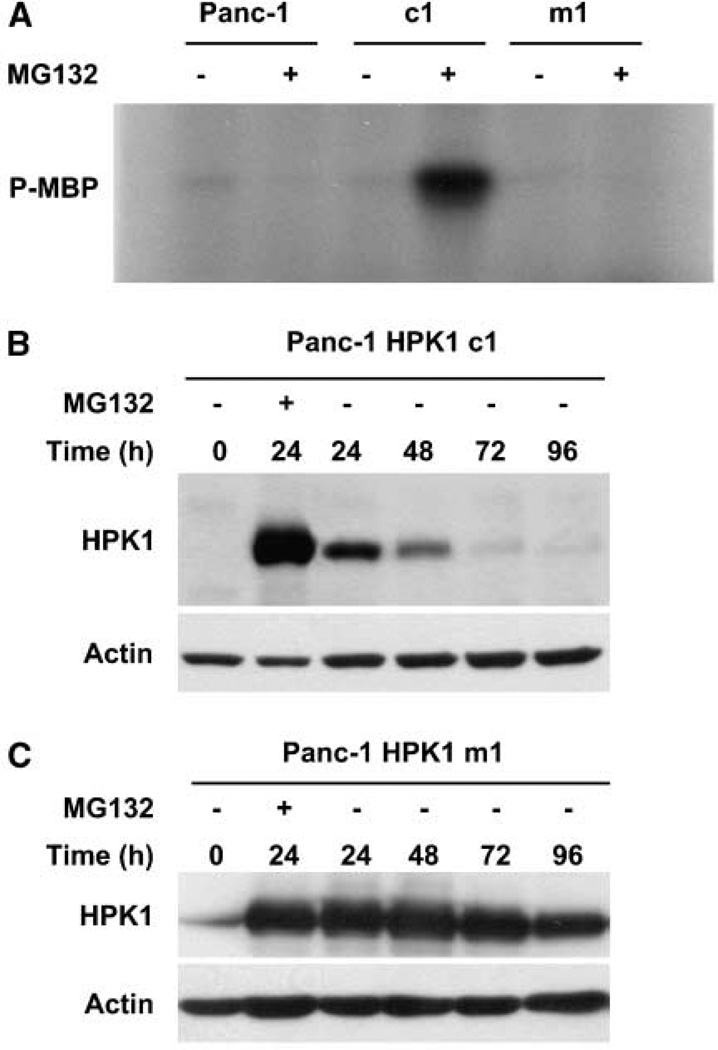Figure 4.
HPK1 kinase activity is required for its proteasome-mediated degradation. A, after MG132 treatment, HPK1 kinase activity was present only in wild-type HPK1/Panc-1 stable clones (c1), not in kinase-dead mutant HPK1/ Panc-1 stable clones (m1) or in parental Panc-1 cells.Panc-1 cells and stable clones, c1 and m1, were either treated or untreated with 0.5 µmol/L MG132 for 24 h, and cell lysates were immunoprecipitated with an anti-Flag M2 antibody. Immunocomplex kinase assays were performed using the MBP as a substrate. B and C, time courses of the wild-type HPK1 protein and the kinase-dead mutant HPK1 protein after MG132 withdrawal. Wild-type HPK1 and kinase-dead mutant HPK1 proteins were monitored by Western blotting. Stable clones, c1 and m1, were either untreated (control) or treated with 2.0 µmol/L MG132 for 24 h. Cells were then washed and maintained in fresh medium without MG132 and harvested at 0, 24, 48, 72, and 96 h after MG132 withdrawal.

